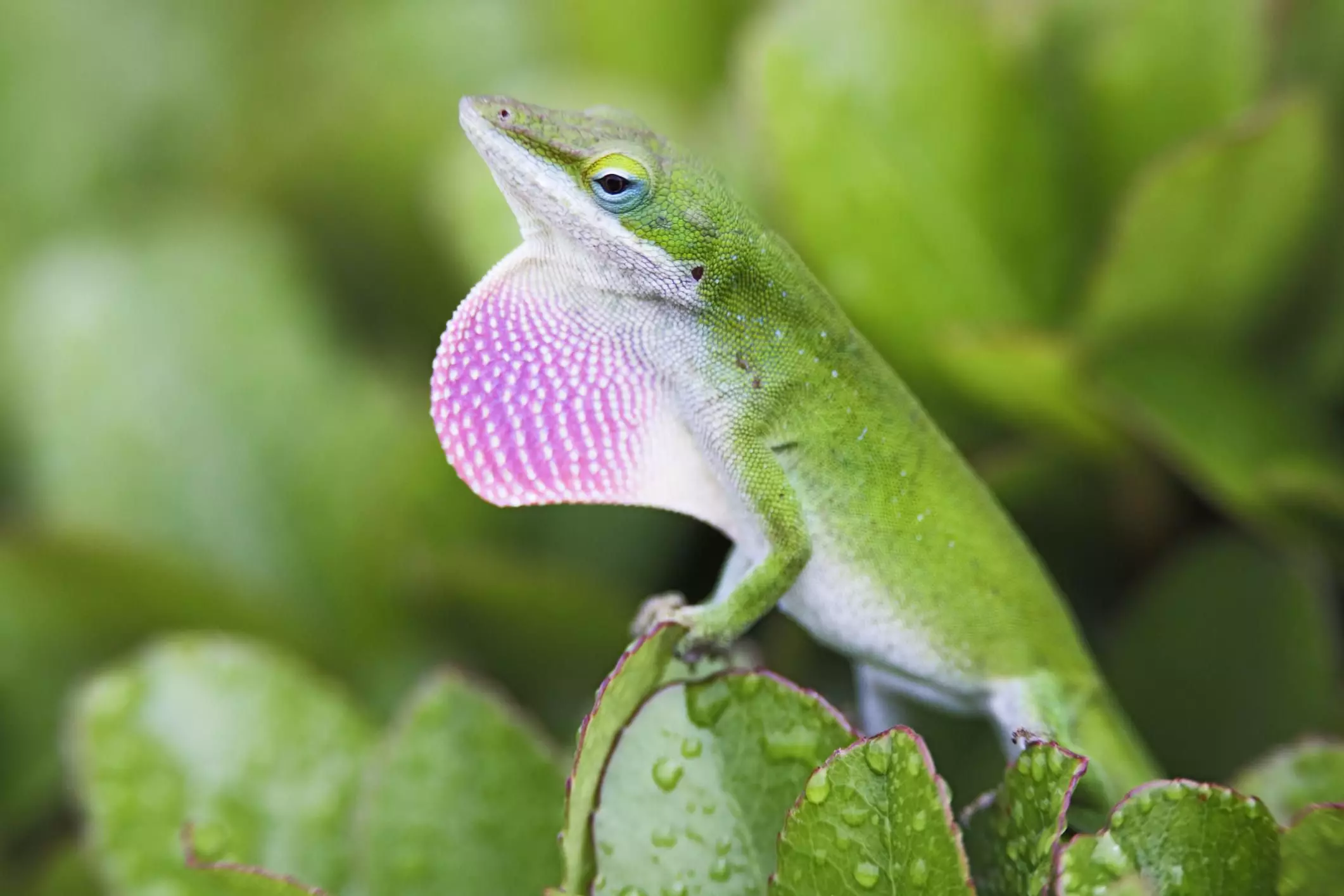The green anole (Anolis carolinensis), often mistaken for a chameleon due to its ability to alter its color, is one of the most popular choices among reptile enthusiasts, particularly novices. Known for their vibrant green hue and dynamic behaviors, these petite lizards originate from the southeastern regions of the United States and various Caribbean islands. While green anoles are relatively budget-friendly and straightforward to care for, potential owners must understand that they are not entirely low-maintenance. Proper housing, dietary needs, and overall care require consistent attention, emphasizing the necessity for responsible ownership.
While the allure of having a green anole resides in its captivating appearance and manageable size—males stretching to about eight inches in length—these creatures come with specific care requirements that must be met. Their ideal habitat is primarily a well-maintained vivarium, which simulates their natural environment. This enclosure should be a secure aquarium—at least a 10-gallon size for single or a pair of anoles, with larger tanks recommended for groups. A screened top is essential to prevent escape, as these lizards are agile climbers.
Hygiene and humidity play critical roles in ensuring the health of these charming reptiles. Maintaining suitable humidity levels (around 70%) can be achieved through daily misting with dechlorinated water. Additionally, the enclosure should accommodate a variety of climbing structures, plants for shade, and branches for basking, allowing the anoles to exhibit their natural behaviors. The absence of such features can lead to stress, impacting their well-being.
Behavior and Temperament
Green anoles are typically skittish and may prefer solitude over handling. Their territorial nature, especially among males, necessitates careful management within shared environments. It’s essential to introduce only one male to a group of females to minimize territorial skirmishes. Their vibrant dewlaps, the flap of skin under the chin, not only serve in courtship displays but also act as indicators of stress or aggression. If an anole feels threatened, it may exhibit aggressive behaviors, making it crucial for pet owners to remain observant and respect the animal’s space.
While their temperament may lead some to believe that handling can be frequent, it is advisable to limit interaction. Anoles prefer to observe from a distance, and excessive handling can lead to health complications for the lizard. They are also prone to dropping their tails as a defense mechanism, a process that, although natural, can impact their appearance and health in the long run.
An essential aspect of keeping a green anole is providing a balanced and varied diet. These lizards thrive on gut-loaded insects, primarily mealworms and wax worms. Owners should feed appropriately sized insects, roughly half the size of the anole’s head, every other day while supplementing with calcium and vitamins. It’s important to avoid feeding wild-caught insects, as they might contain harmful pesticides that could harm the lizard.
Moreover, anoles derive a significant portion of their hydration from water droplets on leaves, highlighting the need for multiple plants in their enclosure. Regular misting of these plants ensures that the anoles have adequate moisture and hydration, further supporting their health and comfort.
Despite their hardy appearance, green anoles can suffer from various health issues if their needs are not adequately met. Conditions such as metabolic bone disease result from poor dietary practices or insufficient UVB exposure, leading to a host of health problems. Pet owners should ensure optimal UVB light sources are available and supplemented every six months. Additionally, signs of mouth rot should prompt immediate veterinary consultation, as this painful ailment can escalate quickly if left untreated.
Respiratory infections, although uncommon, may affect anoles and typically arise from insufficient humidity or temperature discrepancies within their environment. Monitoring and adjusting these conditions is critical to preventing such health issues.
Keeping green anoles can be an incredibly rewarding experience for reptile enthusiasts, particularly if one prioritizes their wellbeing and natural habits. From crafting an appropriate enclosure to maintaining a balanced diet and monitoring behavior, potential owners must commit to a regimen of care and observation. While they may be small and visually delightful, green anoles require thoughtful attention to thrive as beloved pets. For anyone considering having green anoles as companions, the gains from this commitment can richly enhance the joy of pet ownership.

